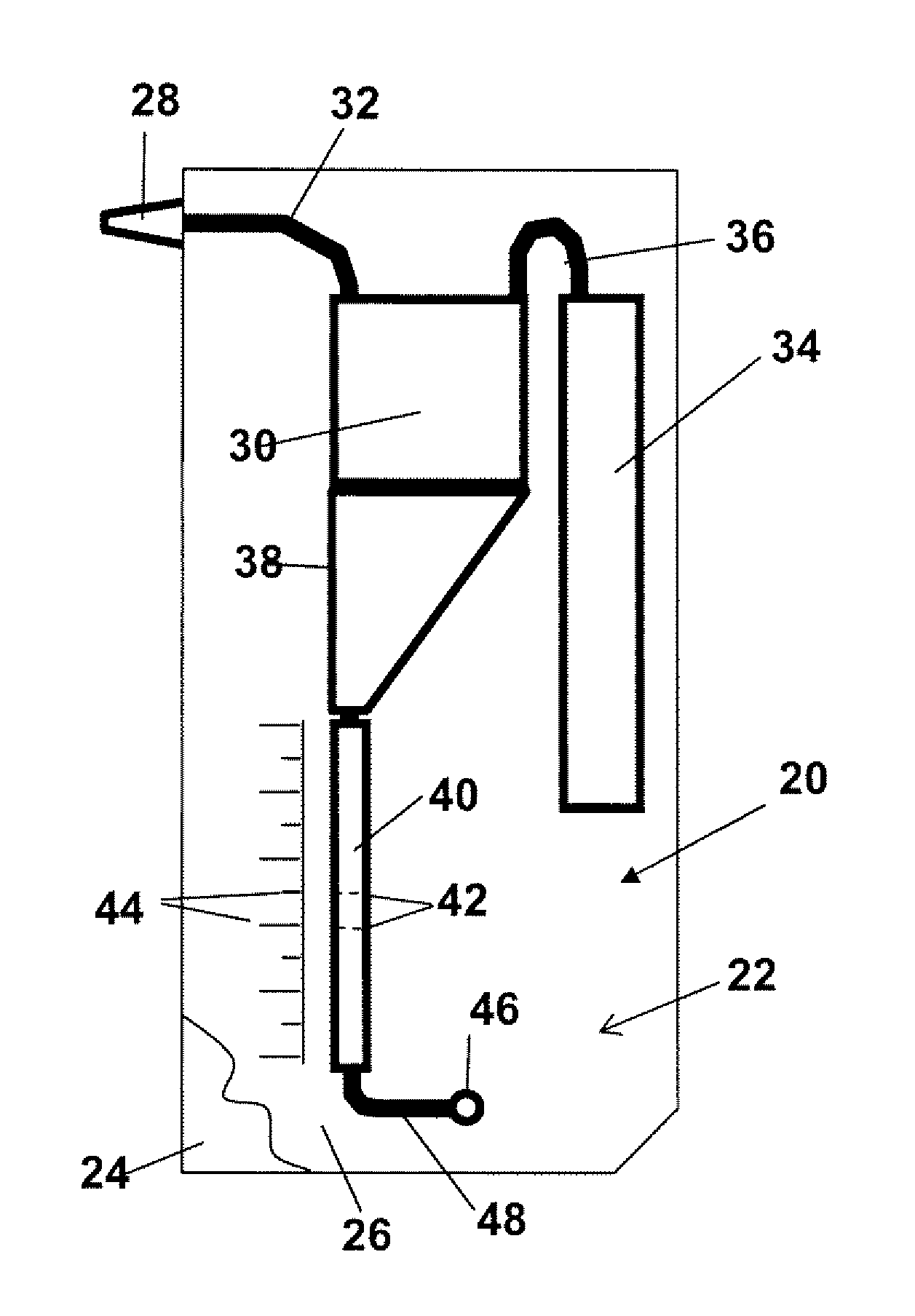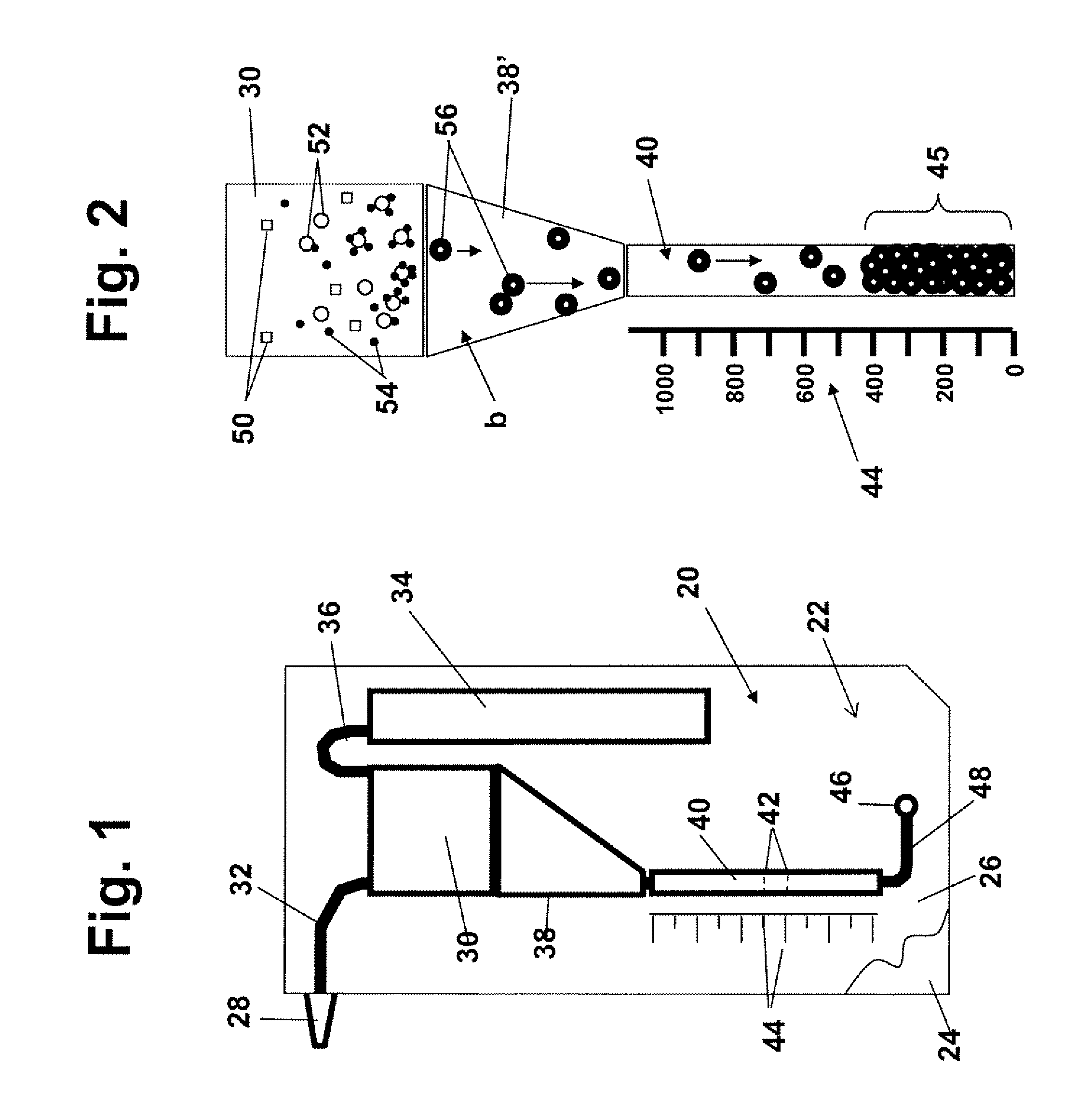Cell assay kit and method
a cell assay and kit technology, applied in the field of cell assay kits and methods, can solve the problems of not being able to lend themselves readily to field settings, storefront clinics, field clinics, trained laboratory personnel, etc., and achieve the effect of increasing the density or magnetic susceptibility of cells
- Summary
- Abstract
- Description
- Claims
- Application Information
AI Technical Summary
Benefits of technology
Problems solved by technology
Method used
Image
Examples
Embodiment Construction
I. Definitions
[0051]Unless otherwise, the terms below have the following meaning herein:
[0052]A “cell sample” refers to any liquid sample containing or suspected of containing one or more types of cells in suspension. A cell sample includes a “body-fluid sample,” referring to e.g. a blood, urine, or saliva sample obtained from a human or other animal body. A blood sample may be whole blood or processed blood or whole blood in which all or the bulk of red blood cells have been removed. Other possible cell samples include e.g. cell cultures, cell extracts obtained from tissue samples, waste-water. Cell samples that are suspected of containing cells include e.g. milk and other food that is contaminated with an unwanted e.g. cell or bacteria type.
[0053]“Concentration” of cells in a cell sample refers to the number of cells in a given cell-sample volume. The term is typically expressed as number of cells / per sample volume.
[0054]A “threshold level or concentration of cells of a given type...
PUM
| Property | Measurement | Unit |
|---|---|---|
| size | aaaaa | aaaaa |
| size | aaaaa | aaaaa |
| diameters | aaaaa | aaaaa |
Abstract
Description
Claims
Application Information
 Login to View More
Login to View More - R&D
- Intellectual Property
- Life Sciences
- Materials
- Tech Scout
- Unparalleled Data Quality
- Higher Quality Content
- 60% Fewer Hallucinations
Browse by: Latest US Patents, China's latest patents, Technical Efficacy Thesaurus, Application Domain, Technology Topic, Popular Technical Reports.
© 2025 PatSnap. All rights reserved.Legal|Privacy policy|Modern Slavery Act Transparency Statement|Sitemap|About US| Contact US: help@patsnap.com



